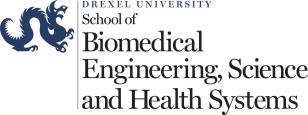Nanomechanics of Murine Synovial Joint Tissues
Friday, May 29, 2015
4:00 PM-5:30 PM
Lin Han, PhD, assistant professor in the School of Biomedical Engineering, Science and Health Systems at Drexel University, will discuss how mice are a standard animal model to study the pathogenesis and progression of osteoarthritis (OA) due to their availability of genetic modification, low cost of maintenance and short lifespan. Since the main function of synovial joint is biomechanical, evaluation of the mechanical properties in murine joint tissues is a key to uncover the molecular origins of OA. Conventional mechanical tests are not applicable to murine tissues due to the small volume and irregular shape. Using three recent projects as examples, this presentation will illustrate the use of atomic force microscopy (AFM)-based nanoindentation can overcome this challenge and provide a novel means to study OA.
The first project revealed the impacts of chondroadherin (CHAD) in cartilage development and function. CHAD, a small leucine-rich protein, regulates chondrocyte synthesis and cartilage matrix collagen fibrillogenesis, but its significance in cartilage function was unclear. Using AFM-nanoindentation, we found CHAD-/- mice had significantly lower modulus than age-matched wild-type mice in the superficial layer cartilage, but not middle/deep zone. These results demonstrated the critical role of CHAD in regulating the matrix development of superficial layer, in particular, the type II/IX/XI collagen network.
The second project studied the progression of post-traumatic OA in wild-type mice after the destabilization of medial meniscus (DMM) surgery. Interestingly, despite histological OA signs only appeared four weeks after DMM, AFM-nanoindentation detected significant decrease in modulus as early as one week after. The change in modulus directly reflected degradation of cartilage mechanical function, and could serve as a sensitive indicator of early OA.
The third project defined the mechanical behaviors of murine meniscus, another synovial tissue with similarly important biomechanical function as cartilage. Currently, there is little knowledge about the structure-mechanics relationships of murine meniscus. For the first time, we showed that murine meniscus had significantly higher modulus than cartilage, and displayed a unique, non-Hertzian indentation response owning to the uniaxially aligned, highly organized collagen fibrils. These studies together contribute to establishing an interdisciplinary knowledge benchmark necessary for further studies in OA pathogenesis and progression via various clinically relevant OA models. For more info, please visit www.biomed.drexel.edu.
Contact Information
Ken Barbee
215-895-1335
barbee@drexel.edu

Location
Papadakis Integrated Sciences Building (PISB), Room 120, located at the corner of 33rd and Chestnut Streets.
Audience
- Undergraduate Students
- Graduate Students
- Faculty
- Staff